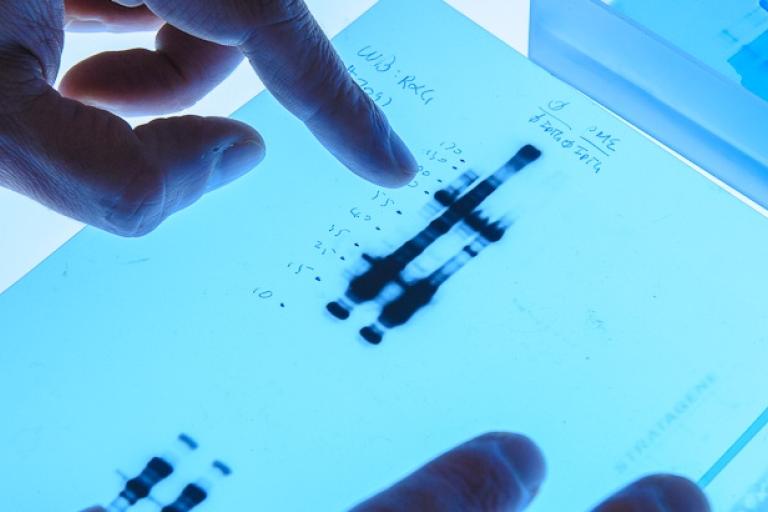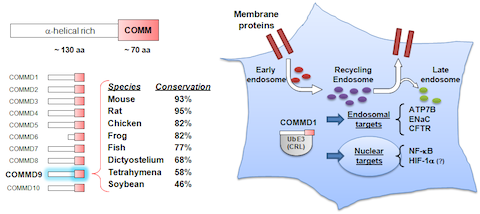In addition to an analysis of molecular events involved in NF-κB regulation, the lab investigates the genetic and molecular basis of human disorders of immune dysfunction. We demonstrated that CCDC22 is required for optimal IκB protein degradation and that mutations in this gene result in altered immune activation in humans (a). We also found that X-linked reticulate pigmentary disorder, immunodeficiency, and autoinflammatory syndrome, are due to mutations in DNA polymerase-α, and in the process, we identified a surprising role for this polymerase in the interferon pathway (b) and in NK cell regulation (c). We continue to study how Pol-a is linked to interferon regulation. Most recently, we identified a new mutation in the gene SCGN that results in a Mendelian form of ulcerative colitis (d). This gene is expressed in neuroendocrine cells where it regulates neurotransmitter and hormone release through the SNARE complex.



